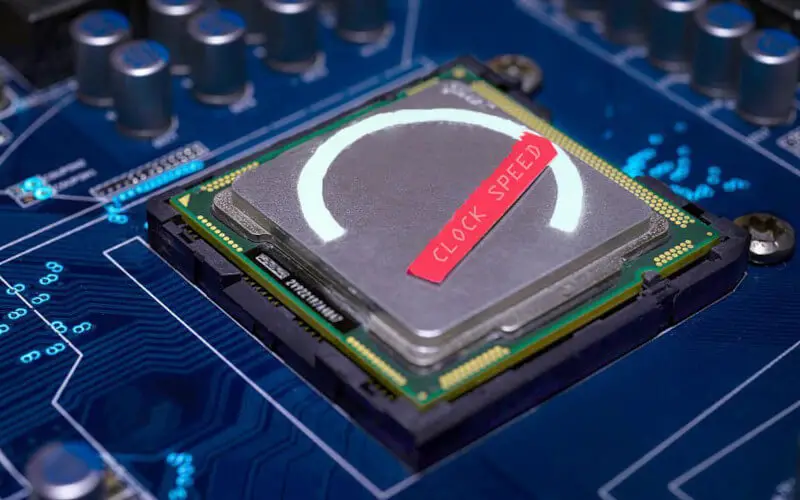I’m always looking for ways to optimize my system’s performance. One way to do this is by tweaking the CPU and GPU clock speeds, either by undervolting or overclocking. But what’s the difference between the two, and which is right for you?
This article will explore the ins and outs of undervolting and overclocking and help you decide which approach is best for your needs.
What is Undervolting?
Undervolting is the act of reducing the voltage supplied to the CPU or GPU. You might be wondering why you would want to do this. After all, isn’t more voltage always better?
Well, not necessarily. See, the voltage supplied to a CPU or GPU plays a big role in how much power it consumes. And as we all know, more power consumption equals more heat generation. This can be a problem, especially if you’re trying to squeeze as much performance as possible from a small form factor PC.
But here’s the thing: Most modern CPUs and GPUs are designed to be able to function within a specific voltage range. This means that, in many cases, you can reduce the voltage without affecting performance.
In fact, by undervolting, you can often achieve the same level of performance as you would with a higher voltage but with less heat and power consumption.
How to Undervolt?
Undervolting is generally a safe and straightforward process. However, it’s important to note that every CPU and GPU is different, so you’ll need to research and follow the instructions specific to your hardware.
Here’s a general outline of the undervolting process:
- Determine the safe voltage range for your CPU or GPU. You can find this information online or consult your hardware’s documentation.
- Download and install a program that allows you to adjust the voltage of your CPU or GPU. Examples include Intel XTU and MSI Afterburner.
- Start by reducing the voltage by a small amount (e.g. -50mV) and run a benchmark or stress test to see how your hardware responds.
- If the benchmark or stress test completes without issues, reduce the voltage by a little more and repeat the process.
- Continue this process until you see issues (e.g., crashing, blue screens, etc.), at which point you’ll know you’ve gone too far.
- Once you’ve found the sweet spot, save your settings and enjoy the benefits of lower power consumption and heat generation.
What is Overclocking?
While undervolting reduces the voltage supplied to the CPU or GPU, overclocking increases it. The goal of overclocking is to boost the performance of your hardware beyond its default clock speed.
For example, let’s say you have a CPU with a default clock speed of 3.0 GHz. By overclocking, you might be able to push it to 3.5 GHz or even 4.0 GHz. This can give you a significant boost in performance, especially in tasks highly dependent on the CPU.
However, it’s important to note that overclocking comes with its own set of risks and challenges. For one, increasing the voltage can put more strain on the hardware, leading to increased heat generation and the potential for permanent damage.
Additionally, not all hardware can be overclocked; even if it is, you’ll need the right motherboard and cooling solution.
How to Overclock?
Like undervolting, overclocking is a process that requires careful planning and attention to detail.
Here’s a general outline of the overclocking process:
- To guarantee optimum speed and safety for your CPU or GPU, it’s important to know its maximum clock rate. You can easily find this information by searching the web or consulting your hardware documentation.
- To fine-tune the clock speed of your CPU or GPU, download and set up a compatible program like Intel XTU or MSI Afterburner. With these programs, you can tweak your processor’s clock speed for optimal performance.
- To optimize your hardware, begin by stepping up the clock speed incrementally (e.g., 100 MHz) and then put it to trial with either a benchmark or stress test for results evaluation.
- If the benchmark or stress test completes without issues, increase the clock speed and repeat the process.
- Continue this process until you see issues (e.g., crashing, blue screens, etc.), at which point you’ll know you’ve gone too far.
- Once you’ve found the sweet spot, save your settings and enjoy the benefits of increased performance.
Undervolting vs. Overclocking: Which is Right for You?
Now that we’ve covered the basics of undervolting and overclocking, you might wonder which approach is right for you.
Here are a few things to consider:
- Heat and power consumption: If you’re trying to build a small form factor PC or want to keep your system running cool and efficient, undervolting might be the way to go. On the other hand, if heat and power consumption isn’t a concern for you, overclocking might be more appealing.
- Performance needs: Overclocking might be the way to go if you want to squeeze as much performance as possible from your hardware. Remember that you’ll need the right cooling solution and be prepared to deal with the increased heat generation.
- Hardware limitations: As mentioned earlier, not all hardware can be overclocked. If your CPU or GPU is already running at the maximum clock speed, undervolting might be your only option for optimization.
Conclusion
Undervolting and overclocking are effective ways to optimize the performance of your PC. However, they each have their own unique set of risks and considerations.
By weighing the pros and cons and choosing the best approach to your needs, you can get the most out of your hardware and enjoy a smoother, more efficient computing experience.





